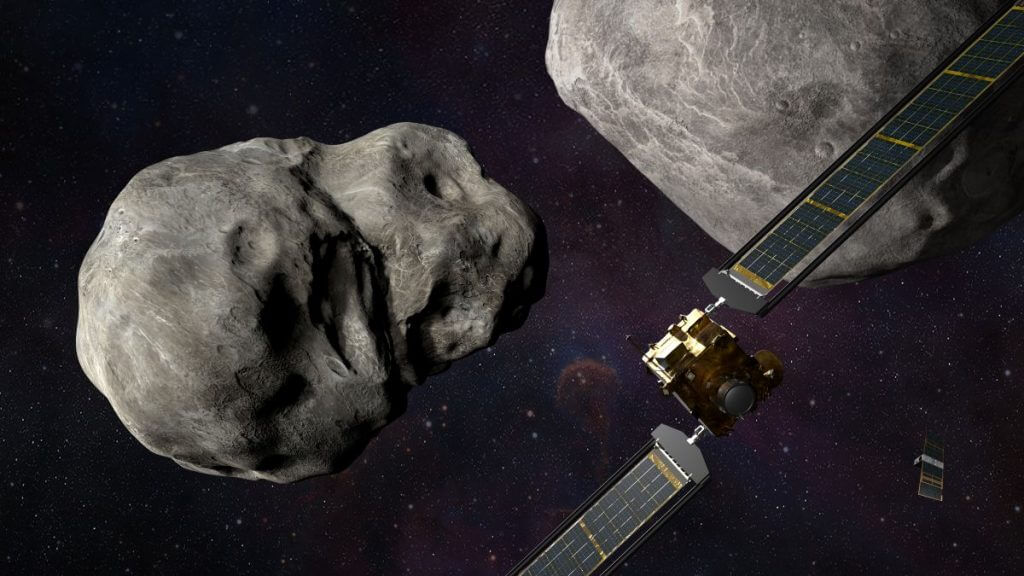
NASA’s DART will slam a spacecraft into an asteroid this month, here’s how to watch (Image Credit: Space.com)
It’s time to get ready to watch a spacecraft slamming into an asteroid.
You can watch all the action from NASA’s Double Asteroid Redirect Mission (DART) live here at Space.com and on NASA TV (opens in new tab), including on impact day (Sept. 26). In the weeks leading up to the impact, you can also tune in to media briefings on the mission’s goals and progress.
DART will slam into Dimorphos, the moonlet of a near-Earth asteroid called Didymos. If successful, the spacecraft will alter the path of Dimorphos in its orbit around Didymos; just how much Dimorphos’ orbit changes will be confirmed in the months and years after impact.
The mission aims to test out planetary defense methods in a safe environment, as the activities pose no threats whatsoever to Earth. Here’s how you can follow the action live.
Related: NASA’s DART asteroid-impact mission explained in pictures

- Monday, Sept. 12: NASA plans to host a hybrid media day at the Applied Physics Laboratory “focused on the technology enabling the DART spacecraft to autonomously navigate to and impact its target asteroid.” We’ll share more details about who is speaking and how to watch webcast events on NASA TV closer to the date, but events begin at 9 a.m. EDT (1300 GMT).
- Thursday, Sept. 22: NASA will hold a media briefing at 3 p.m. EDT (1900 GMT) at NASA Headquarters in Washington to discuss DART’s final activities before impact. We’ll share the speakers and the details about how to watch on NASA TV closer to the date.
- Monday, Sept. 26: Live coverage of DART’s impact will start at 6 p.m. EDT (2200 GMT). You can see it live here at Space.com, on NASA TV and on the agency’s website (opens in new tab). The public also can watch live on agency social media accounts on Facebook (opens in new tab), Twitter (opens in new tab), and YouTube (opens in new tab). Impact will occur at 7:14 p.m. EDT (2314 GMT).
In the days surrounding the impact, you can also catch live coverage of the mission on various NASA social media accounts:
- Twitter: @NASA (opens in new tab), @NASASolarSystem (opens in new tab), @AsteroidWatch (opens in new tab), @JHUAPL (opens in new tab)
- Facebook: NASA (opens in new tab), NASA Solar System Exploration (opens in new tab), Johns Hopkins University Applied Physics Lab (opens in new tab)
- Instagram: @NASA (opens in new tab), @NASASolarSystem (opens in new tab), @JohnsHopkinsAPL (opens in new tab)
DART won’t only be doing science on its own; about 10 days ahead of impact it will release a small cubesat called LICIACube, built by the Italian Space Agency. The cubesat will watch the impact in real time and send Earth images of the brand new crater.
The European Space Agency will launch a follow-up surveyor mission in 2024, called Hera. That spacecraft will study the two asteroids in greater detail, including checking up on the impact crater and measuring the physical structure and chemical composition of the double worlds.
Follow Elizabeth Howell on Twitter @howellspace. Follow us on Twitter @Spacedotcom and on Facebook.





